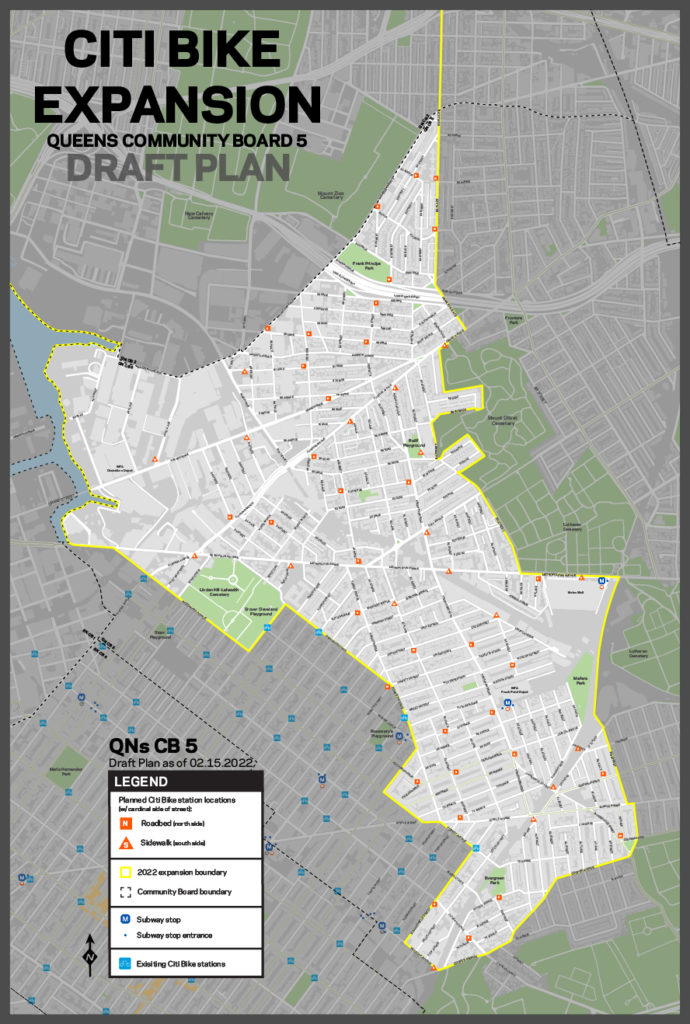JPCA argue that DOT draft plan would disrupt Middle Village, Maspeth, Glendale and Ridgewood
As ridership increases and environmental preservation efforts are further encouraged, the Department of Transportation seeks to expand its Citi Bike outreach.
Its latest expansion proposal would add 52 Citi Bike stations throughout neighborhoods within Community Board 5, which include Middle Village, Maspeth, Glendale and Ridgewood. It would include 18 stations on the sidewalks and 34 in roadbeds.
In response, JPCA released a counter proposal to the DOT’s Citi Bike draft plan in support of residents who own cars in those communities, which is the majority of households.
“We’re a transit desert in most of the areas, so they were putting more of their stations in the street, which takes parking away from people who need it for parking at their residences or businesses,” JPCA member and Juniper Berry Editor Christina Wilkinson said.
“So I think our plan is more sensitive to the needs of the community,” she continued. “We’re having bus stops taken away from us and spaced further apart. So having bike share with this narrow criteria that the DOT has of every two or three blocks is not very realistic if they’re asking people who take mass transit to walk further to get to the bus.”
She emphasized that JPCA takes no issue with stations placed on sidewalks as they are non-disruptive, however they must be placed strategically.
“The regular destinations of people living here, such as Queens Blvd. or Woodhaven Blvd., as well as the other half of CB5, do not yet have Citi Bike docks installed. The inability to dock the bikes at popular destinations reduces the program’s usefulness,” JPCA’s counter proposal says.
“It would be more strategic to have Citi Bike installed boroughwide along major commercial corridors before focusing on residential area placement.”
The counter proposal also points out the fact that Citi Bike docks feature branded content from Citi and Lyft, which is generally prohibited on residentially zoned blocks.
JPCA advocates that only 43 stations be placed in the CB5 neighborhoods, and eliminated the locations from the DOT’s plan that they felt would not be as useful to residents.
Their plan has been shared with the DOT via a virtual meeting on April 6.
“I think that they were pretty receptive to what we were saying. They just received the proposal earlier that day, so it was hard for them to give us any feedback on what we proposed,” Wilkinson said.
“But they said that they would look at each individual location, most likely visit it in person and determine whether or not there were any reasons why what we proposed wouldn’t be able to be implemented.”



